
Curriculum
Learn more about our innovative curriculum and local clerkship opportunities.

CHSU-COM’s systems-based clinical integration curricular model is based on the premise that a student needs to know and understand normal biomedical and clinical sciences before abnormal or pathological conditions can be addressed.
Nutrition, clinical relevance, ethics, health policy, evidence-based medicine, and application of foundational knowledge, skills, and attitudes are added to achieve better retention and retrieval. The curriculum includes systems-based courses, longitudinal courses, and inter-professional education experiences. To help serve the needs of the Central Valley, Medical Spanish courses help CHSU-COM students learn the language and also gain a better understanding of some of the cultural aspects that can play a role in a Spanish speaking patient’s health.
The teaching format primarily utilizes Team-Based Learning (TBL), simulation, and other active learning modalities. Assessments are multimodal and include written, laboratory practical examinations, Objective Structured Clinical Examinations (OSCES), and other innovative methodologies.
For the last two years of the curriculum, CHSU has partnership agreements to assure the core third- and fourth-year rotations along with selective clinical education clerkships are available to be completed in California and primarily in the Central Valley, with a focus on clinical experiences serving diverse populations and provide opportunities for education in community health centers, hospitals and ambulatory settings.
Unique Aspects of Curriculum
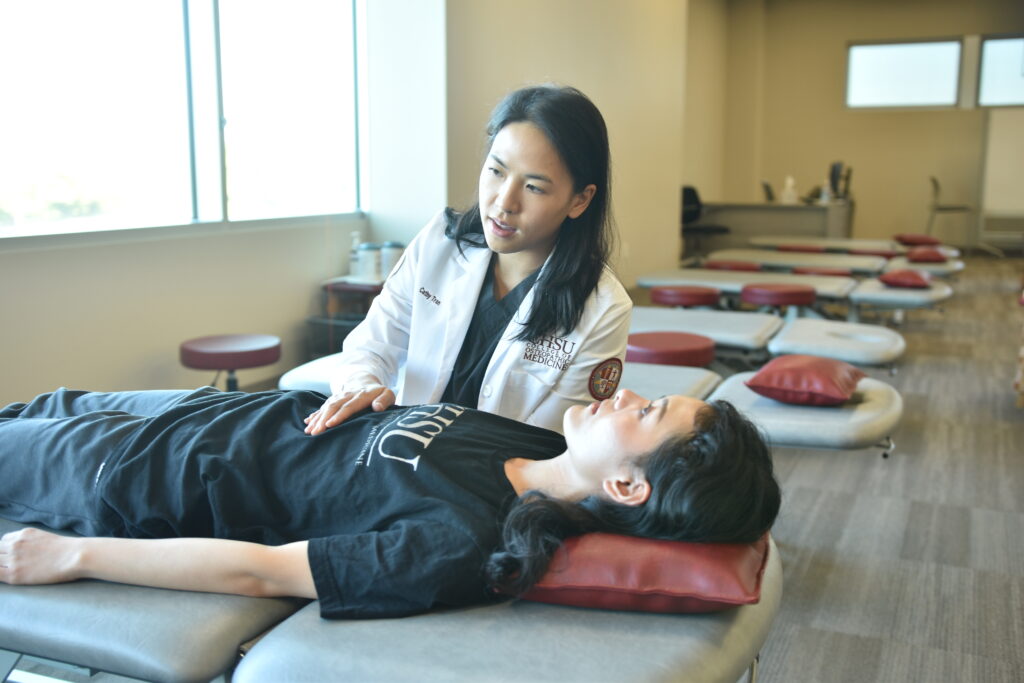
Hands-on Learning of OMT
Learn Osteopathic Manipulative Treatment techniques (OMT) and palpatory skills used in osteopathic diagnosis and treatment.

Nutrition & Culinary Medicine
Learn the basics of nutrition and culinary medicine through cases and hands-on cooking classes.
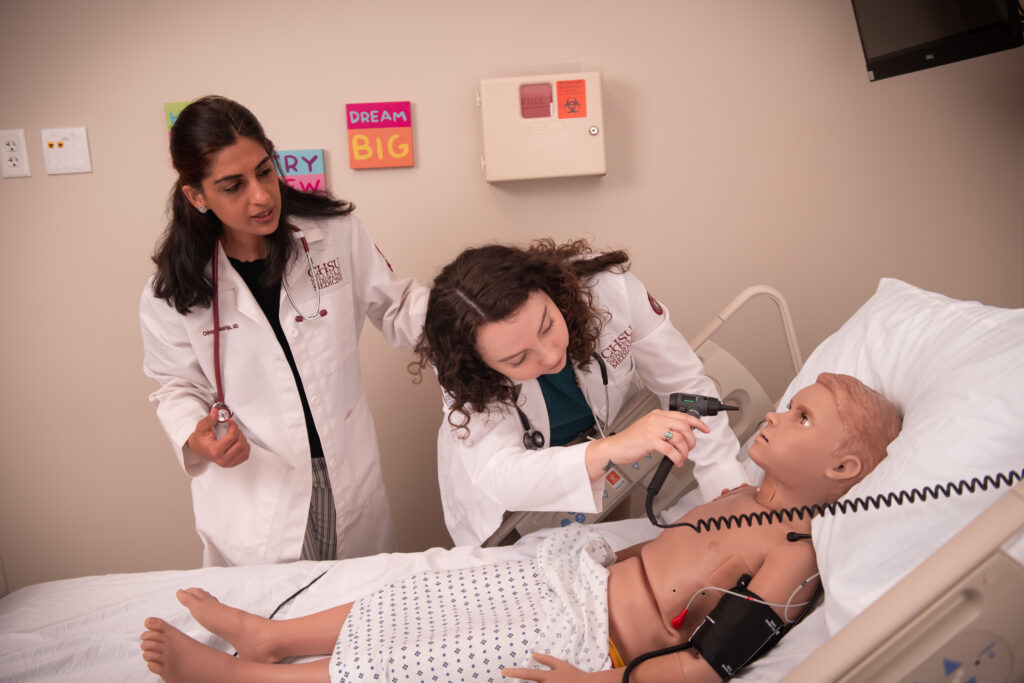
Simulation Center
Participate in simulations with manikins and human standardized patients at our state-of-the-art Simulation Center.
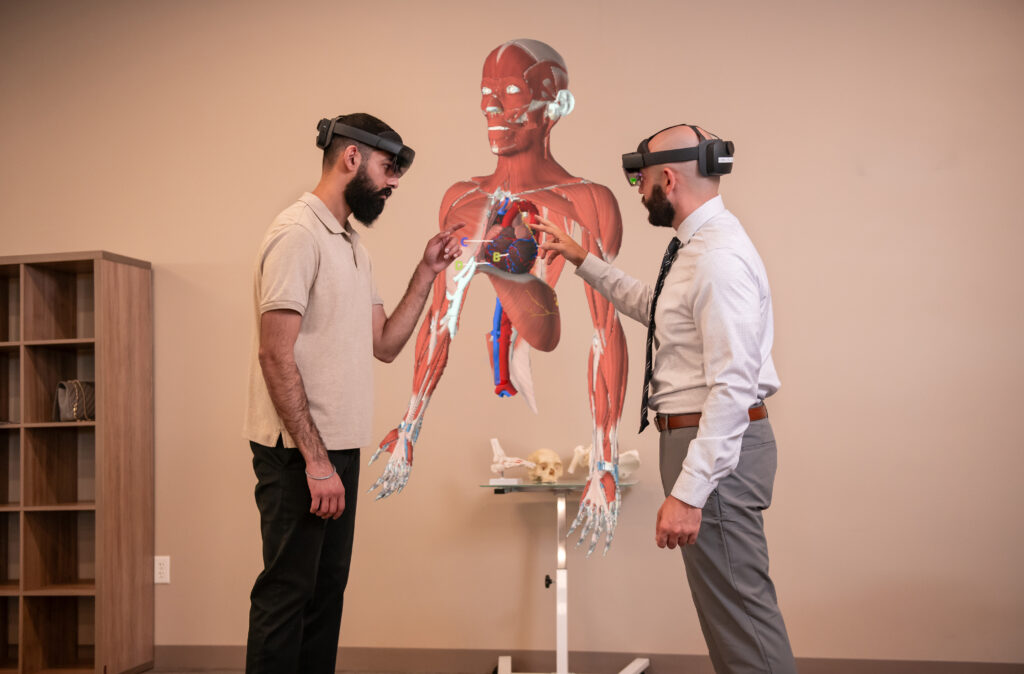
Virtual Anatomy
Study anatomy using virtual anatomy instead of traditional cadaver and dissection labs for learning.
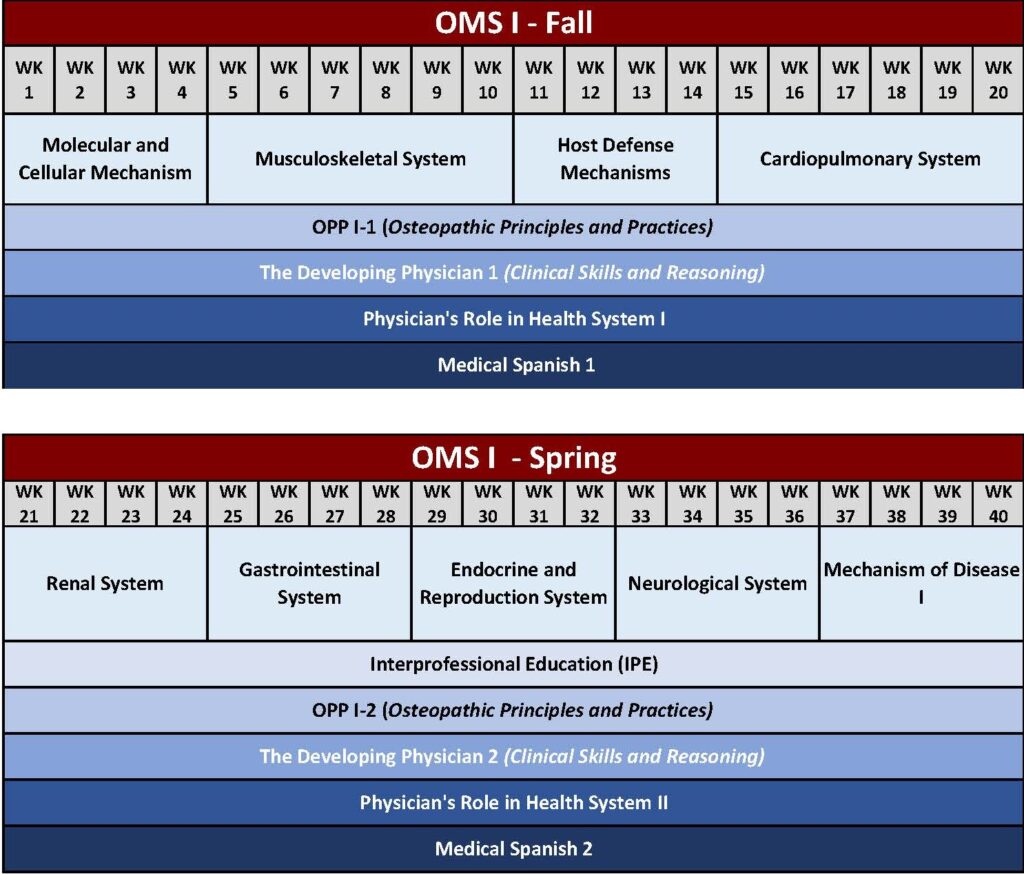
OMS I
DIDACTICS
In the OMS I (first year) of CHSU-COM’s systems-based clinical integration curricular model the curriculum is focused on normal anatomy, physiology, and biochemistry and what happens in the absence of normal. Nutrition, culinary medicine, and medical Spanish courses are incorporated throughout the year.
CLINICAL EDUCATION
Students participate in Physician’s Role Experiences (PREs) through the Physician’s Role in the Health System (PRHS) courses, which provide students the opportunity to participate with various healthcare organization’s public health projects. Students attend their assigned facility, one half day a month. Students are divided into rotating groups with some groups on campus and other groups at their assigned sites.
Related Links
Nutrition and Culinary Medicine
Osteopathic Skills Lab
PRHS Course
OMS I-IV Curriculum
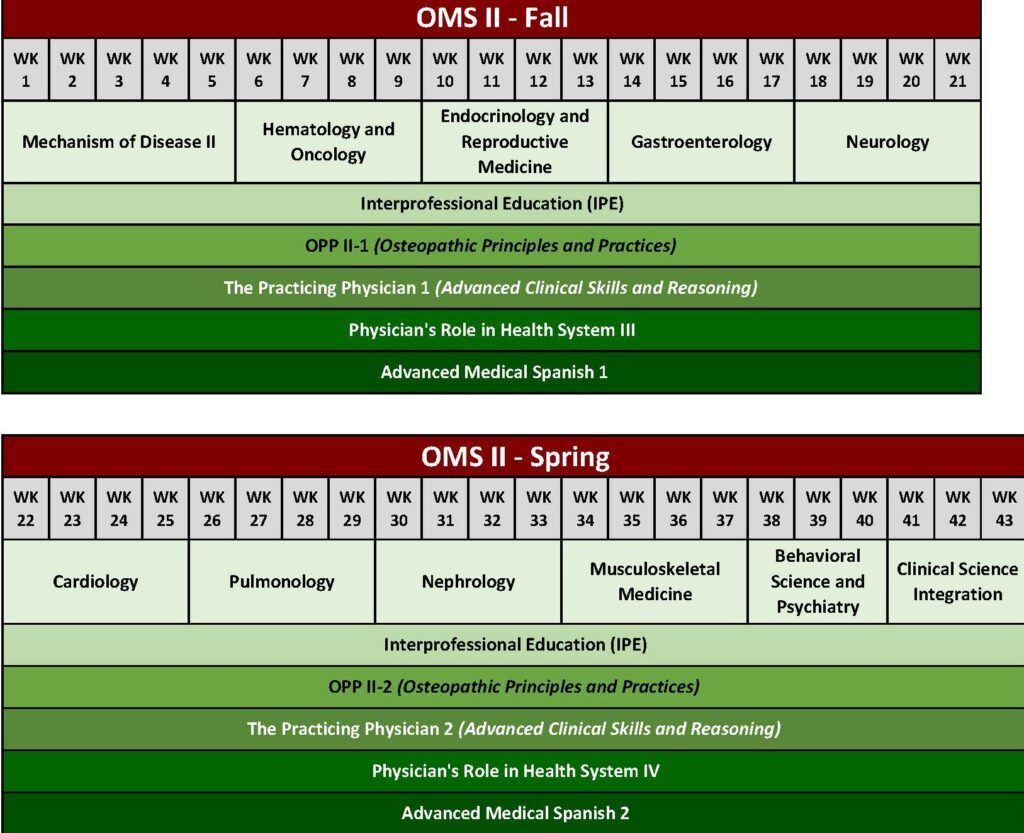
OMS II
DIDACTICS
In the OMS II (second year) CHSU-COM’s systems-based clinical integration curricular model the curriculum is focused on abnormal, pathophysiology, disease processes with pharmacotherapeutics and treatments. Nutrition, culinary medicine, and medical Spanish courses are incorporated throughout the year.
CLINICAL EDUCATION
Students continue to participate in Physician’s Role Experiences (PREs) through the Physician’s Role in the Health System (PRHS) courses, which provide students the opportunity to participate with various healthcare organization’s public health projects. Students attend their assigned facility, one half day a month. Students are divided into rotating groups with some groups on campus and other groups at their assigned sites.
Related Links
Nutrition and Culinary Medicine
Osteopathic Skills Lab
Research and Scholarly Activity
OMS I-IV Curriculum
OMS III
DIDACTICS
In the OMS III (third year), Education Days are held on campus for third-year students on core rotations; attendance is required. Education Days are scheduled on a set half day twice a month and students are excused from their assigned clerkship.
CLINICAL EDUCATION
Students are enrolled in clinical activities called Clerkships throughout the entire academic years of the third and fourth years. The clinical education curriculum ensures that students complete the entirety of their clinical education prior to graduation.
Third year core clinical clerkships are based at regional hospitals, clinics, and health care facilities with health care providers in the community. Students rotate through clerkships in family medicine, internal medicine (general and specialty), surgery (general and specialty), women’s health, pediatrics, and psychiatry.
Related Links
Clerkships Map
Student Clerkship Manual
Preceptor Information
OMS I-IV Curriculum

OMS IV
CLINICAL EDUCATION
In the OMS IV (fourth year), students continue with their clerkship rotations in the Central Valley and other locations throughout the state. Required clerkships include emergency medicine, underserved medicine, primary care, and specialty medicine.
Students have additional opportunities to schedule their own audition rotations, where they showcase their abilities and prepare for the residency match. These audition rotations are in the specialty of their own choosing and can be in diverse locations across the United States.
Many of these audition rotations are scheduled through the Visiting Student Learning Opportunities (VSLO) Program, which enables medical students to pursue subinternships and other clerkships in locations away from their home institutions.
By the end of their fourth year, the entirety of their clinical education is completed in order to graduate.
Related Links
AAMC Visiting Student Learning Opportunities TM
Clerkship Map
Clerkship Manual
OMS I-IV Curriculum
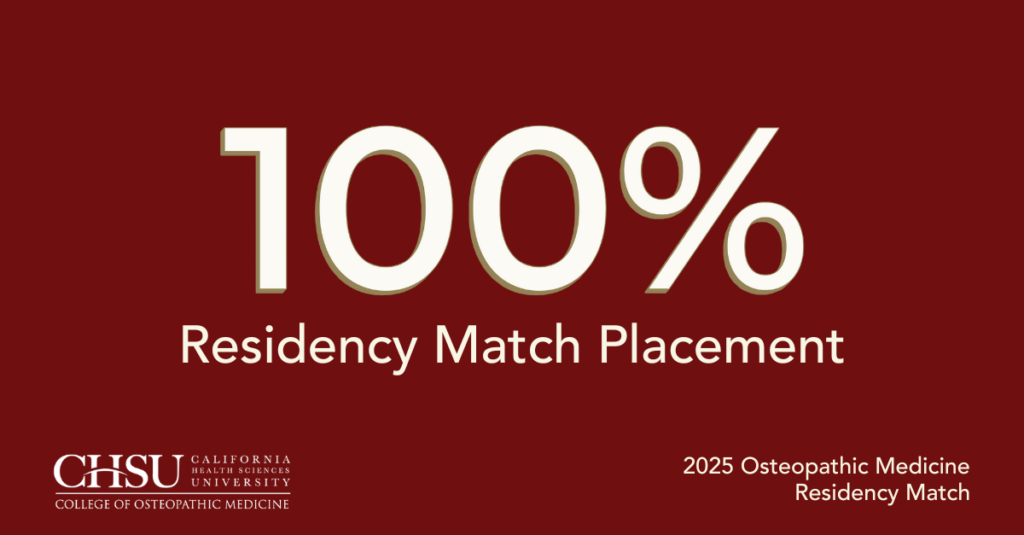
graduate medical eduation
matching for residency
CHSU-COM Graduates have the opportunity to match for residencies in local hospitals, hospital systems, clinics and health care facilities in many different specialties. CHSU-COM graduates have achieved a 100% Residency Match placement for the first two cohorts of 2024 and 2025.
Related Links
Residency Matching
Central Valley Residency Programs
Growth of GME in the Central Valley
CHSU-COM Outcomes
COMLEX-USA Results
CHSU-COM students are required to take the Comprehensive Osteopathic Medical Licensing Examination of the United States (COMLEX-USA) exam series, designed to assess osteopathic medical knowledge, knowledge fluency, clinical skills, and other competencies essential for practice as an osteopathic generalist physician. CHSU-COM results can be found on our COMLEX-USA outcomes webpage.
GME Residency Match Results
After completion of the DO degree, CHSU-COM students pursue Graduate Medical Education (GME), also known as residency match. Match results can be found on our CHSU-COM Match Results webpage.
